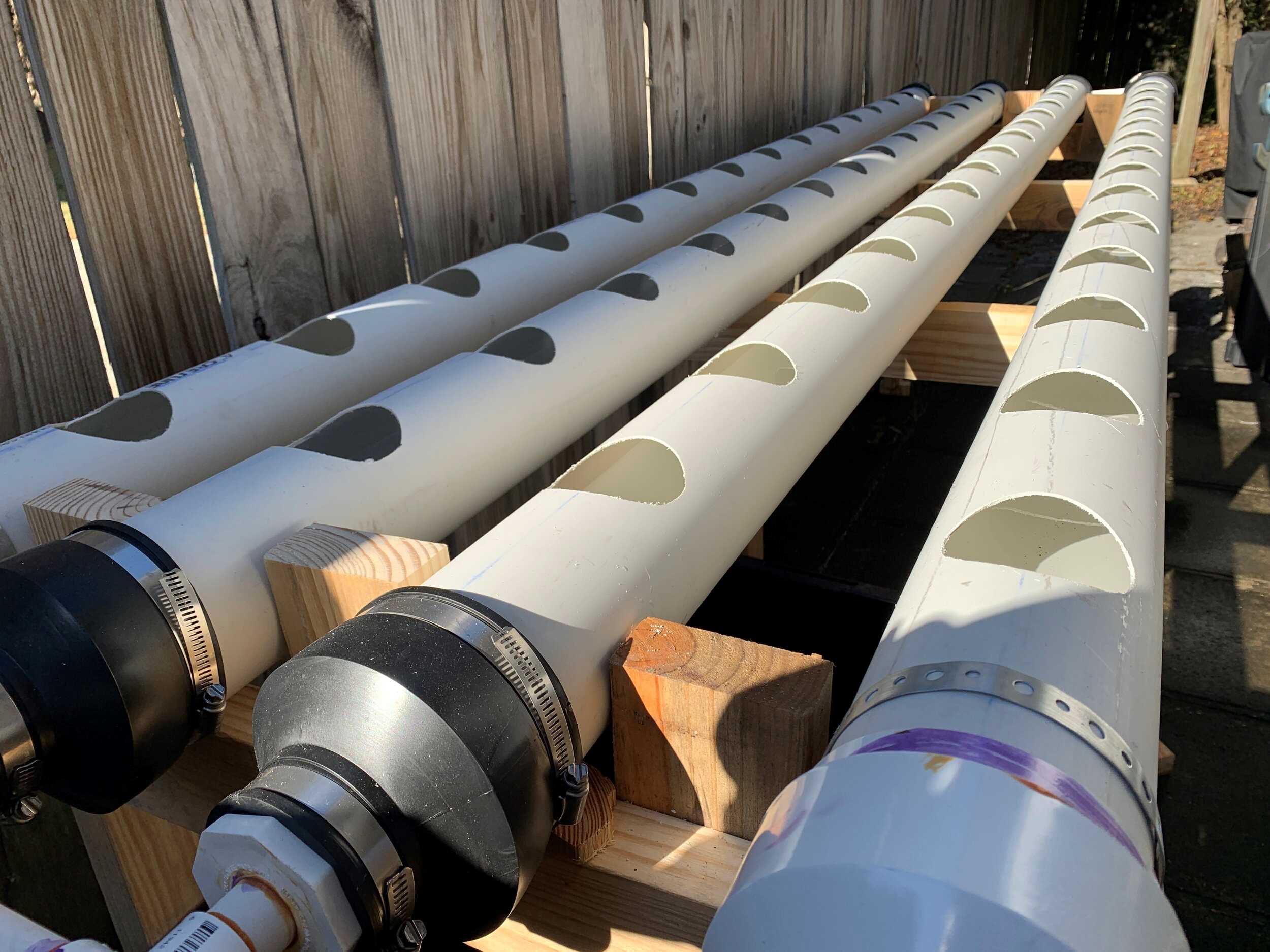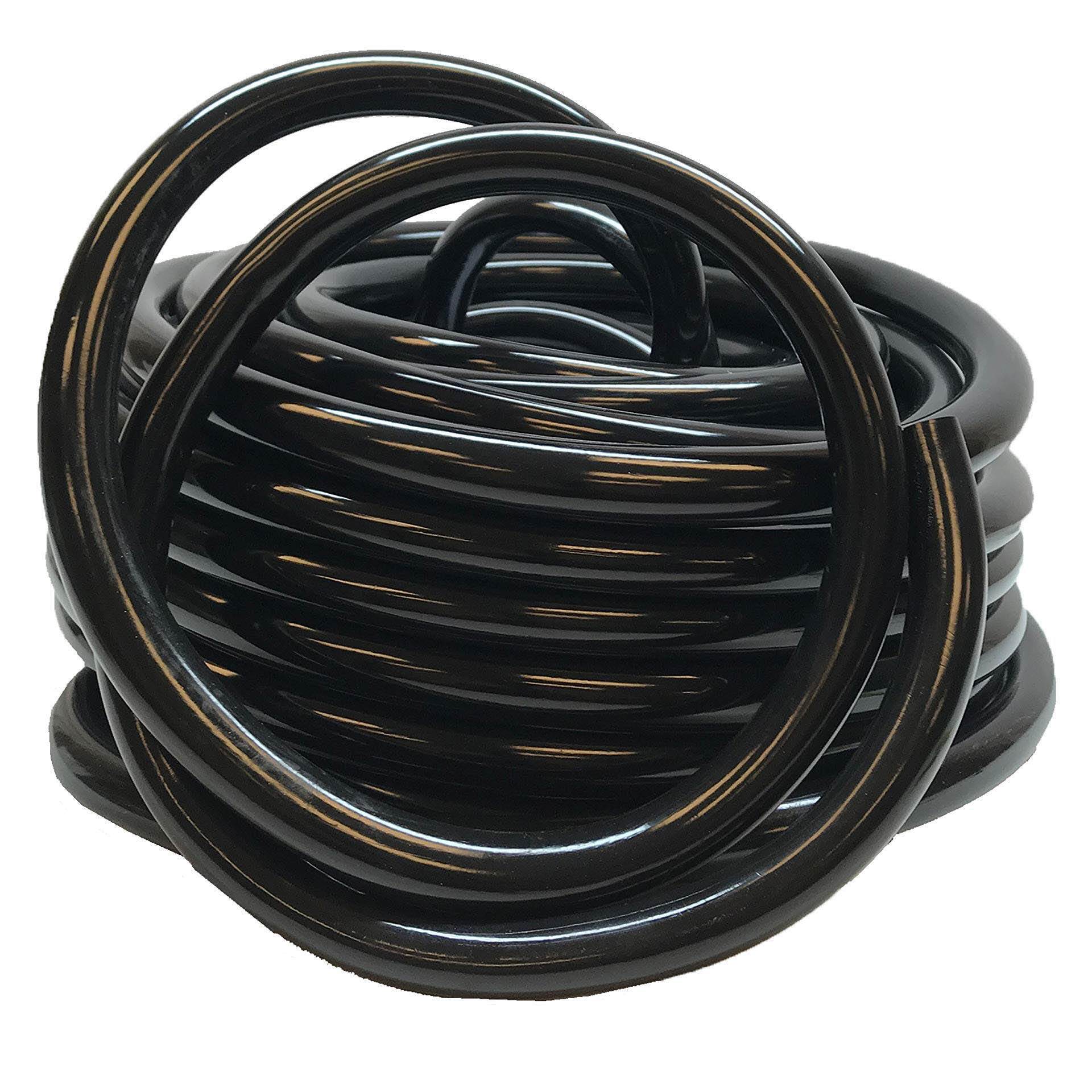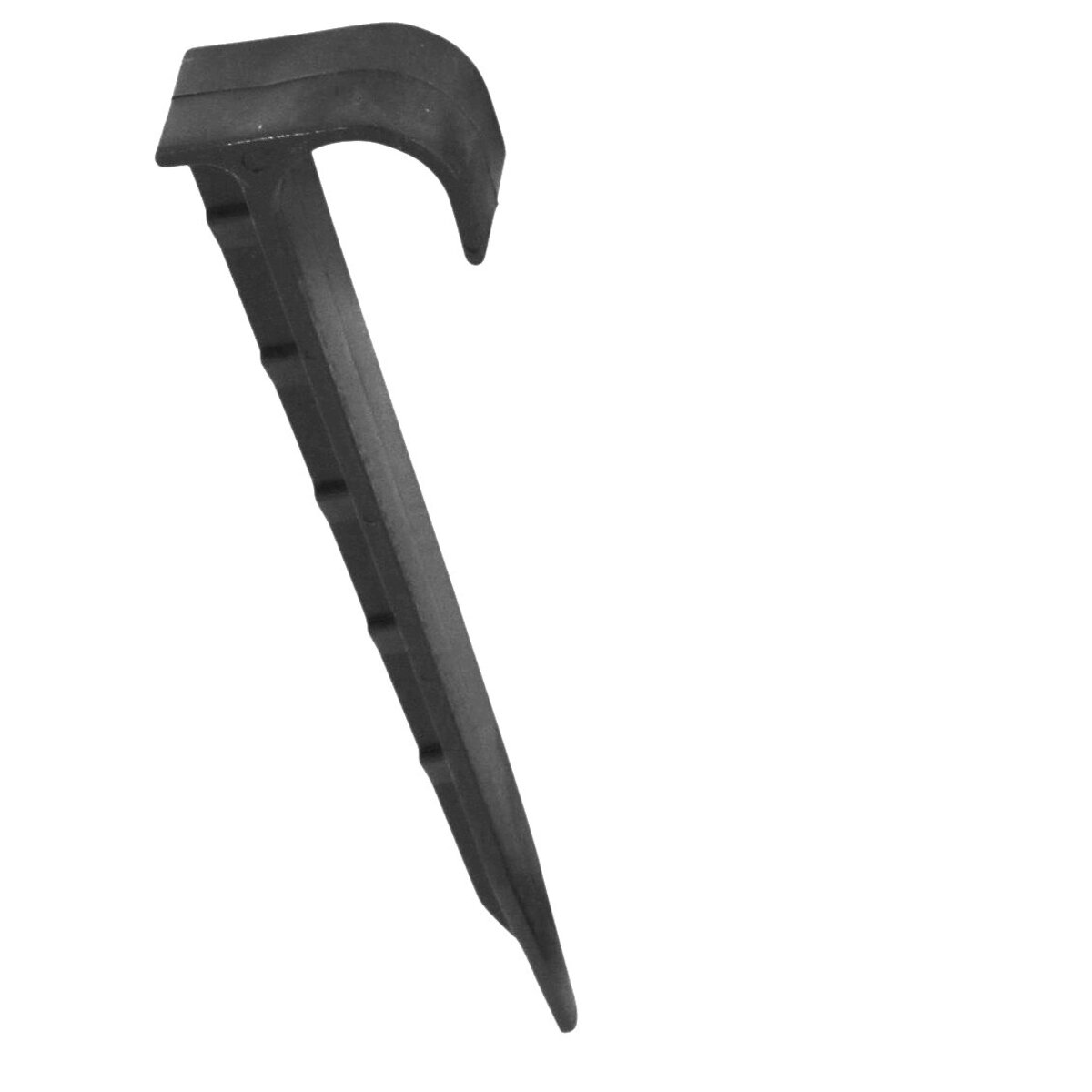Home>Gardening Techniques>DIY Projects>How To Connect Irrigation Tubing To Pvc


DIY Projects
How To Connect Irrigation Tubing To Pvc
Published: November 20, 2023
Learn how to connect irrigation tubing to PVC in this step-by-step DIY project guide. Improve the efficiency of your irrigation system with these simple instructions.
(Many of the links in this article redirect to a specific reviewed product. Your purchase of these products through affiliate links helps to generate commission for Chicagolandgardening.com, at no extra cost. Learn more)
Table of Contents
Introduction
Welcome to our comprehensive guide on how to connect irrigation tubing to PVC pipes. If you’re a DIY enthusiast or a homeowner looking to improve your irrigation system, this step-by-step tutorial will walk you through the process. By connecting irrigation tubing to PVC pipes, you can efficiently distribute water to your garden, lawn, or any other outdoor area.
Having a properly functioning irrigation system is essential for maintaining a healthy and vibrant landscape. Whether you need to water plants, flowers, or grass, connecting irrigation tubing to PVC pipes is a crucial step in the setup. While it may seem daunting at first, with the right materials and guidance, you can easily accomplish this task.
In this guide, we will cover the materials you will need, along with the step-by-step process of connecting irrigation tubing to PVC pipes. From measuring and cutting the PVC pipe to attaching and securing the tubing, we will help you navigate through each stage. By following these instructions, you can ensure a durable and leak-free connection that will help you achieve efficient and effective irrigation.
Before we dive into the details, it’s essential to note that safety is a top priority. Always wear protective gear, such as gloves and goggles, when working with PVC pipes and irrigation equipment. Additionally, be cautious when using tools such as saws and drills, and carefully follow the manufacturer’s instructions.
Now, let’s gather the necessary materials and get started on connecting your irrigation tubing to PVC pipes!
Materials Needed
Before you begin connecting irrigation tubing to PVC pipes, gather the following materials:
- PVC pipe – Ensure that you have the appropriate size and length of PVC pipe for your irrigation system.
- Irrigation tubing – Choose tubing that is compatible with your irrigation system and the plants or areas you intend to water.
- PVC fittings – Depending on the configuration and design of your irrigation system, you may need elbows, couplings, tees, or other fittings to connect the tubing to the PVC pipe.
- PVC primer and cement – These are essential for securely bonding the PVC fittings and pipes together.
- Hacksaw or PVC cutter – Use a hacksaw or PVC cutter to cut the PVC pipe to the desired length.
- Utility knife – You may need a utility knife to cut the irrigation tubing to the appropriate size and make clean, straight cuts.
- Tubing clamps – These will help secure the irrigation tubing to the PVC pipe and prevent any movement or leaks.
- Measuring tape or ruler – Use a measuring tape or ruler to ensure accurate measurements for cutting the PVC pipe and irrigation tubing.
- Marker or pencil – Mark the PVC and irrigation tubing for precise cutting and alignment.
- Gloves and goggles – Protect your hands with gloves and your eyes with goggles while working with PVC and the connecting materials.
Having these materials ready in advance will streamline the process and ensure you have everything needed for a successful irrigation tubing to PVC pipe connection. Now that you have all the necessary materials, let’s move on to the step-by-step process of connecting irrigation tubing to PVC pipes.
Step 1: Measure and Cut PVC Pipe
The first step in connecting irrigation tubing to PVC pipes is to measure and cut the PVC pipe to the desired length. Follow these steps:
- Begin by determining the length of PVC pipe you need for your irrigation system. Measure the distance between the two points where you want to connect the irrigation tubing.
- Using a measuring tape or ruler, mark the appropriate length on the PVC pipe. Ensure that the mark is clear and visible.
- Next, secure the PVC pipe in a vice or use clamps to hold it steady. This will prevent it from moving while you cut.
- Grab a hacksaw or a PVC cutter and carefully cut the PVC pipe along the marked line. Apply steady pressure and use long, smooth strokes to ensure a clean and even cut.
- After cutting, use a utility knife to clean up any rough edges or burrs on the cut end of the PVC pipe. This will ensure a smooth surface for proper fitting attachment.
It’s important to measure and cut the PVC pipe accurately to achieve a secure and leak-free connection. Take your time and double-check your measurements before making any cuts. Remember, it’s always better to cut the PVC pipe slightly longer than needed, as you can trim it down further if necessary.
Now that you have your PVC pipe cut to the appropriate length, you’re ready to move on to the next step: preparing the irrigation tubing.
Step 2: Prepare the Irrigation Tubing
After measuring and cutting the PVC pipe, it’s time to prepare the irrigation tubing for connection. Follow these steps:
- First, determine the length of the irrigation tubing you need. Measure the distance between the connection points on the PVC pipe and add a few extra inches for flexibility.
- Using a measuring tape or ruler, mark the appropriate length on the irrigation tubing. Make sure the mark is clear and easy to see.
- Take a utility knife and carefully cut the irrigation tubing along the marked line. Ensure that you make a clean and straight cut to ensure a proper connection.
- Once the cut is made, inspect the end of the irrigation tubing for any rough or jagged edges. Use the utility knife to smooth out any imperfections, ensuring a clean and smooth surface.
- Before proceeding to the next step, double-check the length and cut of the irrigation tubing to ensure it fits properly with the PVC pipe.
Preparing the irrigation tubing correctly is crucial for a secure and efficient connection. Taking the time to measure, mark, and cut the tubing accurately will help prevent any leaks or issues down the line.
Once the irrigation tubing is prepared, you can move on to the next step: attaching the irrigation tubing to PVC pipes.
Step 3: Attach the Irrigation Tubing to PVC
Now that the PVC pipe and irrigation tubing are prepared, it’s time to connect them together. Follow the steps below to attach the irrigation tubing to the PVC pipe:
- Start by applying PVC primer to the outside of the end of the PVC pipe that you will be attaching the irrigation tubing to. The primer helps clean and prepare the surface for a strong bond.
- Once the primer is applied, follow it up by applying PVC cement to the same area. Be sure to use a generous amount, covering the entire circumference of the pipe.
- Take the prepared end of the irrigation tubing and slide it onto the primed and cemented section of the PVC pipe. Push it firmly and twist slightly to ensure a secure fit.
- Hold the tubing in place for a few moments to give the cement time to set and create a strong bond. Check the manufacturer’s instructions for the recommended drying time.
It’s important to note that PVC cement sets quickly, so make sure you align the tubing correctly before attaching it to the PVC pipe. Once the cement sets, it becomes difficult to adjust the position or remove the tubing without damaging the connection.
Repeat this process for any additional connections you need to make between the irrigation tubing and PVC pipes. Make sure to follow the same steps of applying primer and cement for each connection.
Now that the irrigation tubing is securely attached to the PVC pipe, it’s time to move on to the next step: securing the connection.
Step 4: Secure the Connection
After attaching the irrigation tubing to the PVC pipe, it’s important to secure the connection to prevent any leaks or movement. Follow these steps to ensure a secure and reliable connection:
- First, inspect the connection between the irrigation tubing and the PVC pipe. Make sure they are aligned properly and fully inserted into each other.
- If needed, use tubing clamps or zip ties to secure the irrigation tubing to the PVC pipe. Place the clamp or zip tie around the tubing and PVC pipe, ensuring a tight fit without causing any damage.
- Space the clamps or zip ties evenly along the length of the connection to provide adequate support.
- Check the connection for any signs of leakage or movement. If you notice any leaks, double-check the connection and tighten the clamps or zip ties as needed.
Securing the connection is essential for maintaining the integrity of your irrigation system. It helps prevent leaks, ensures proper water flow, and minimizes the risk of the connection coming loose or disconnecting unexpectedly.
Once you have secured the connection, it’s time to move on to the final step: testing the connection.
Step 5: Test the Connection
Now that the irrigation tubing is securely attached to the PVC pipes and the connection is properly secured, it’s time to test the connection to ensure it functions as intended. Follow these steps to test the connection:
- Turn on the water source to allow water to flow through the irrigation system.
- Observe the connection between the irrigation tubing and the PVC pipe for any signs of leakage. Check for water seepage or drips around the connection point.
- If there are no visible leaks, take a closer look and feel the connection to ensure it is secure and water is flowing smoothly.
- Inspect other areas of your irrigation system to check for any leaks or issues that may be unrelated to the connection you just made.
- If you notice any leaks or problems, turn off the water source and double-check the connection. Make any necessary adjustments, such as tightening clamps or reapplying PVC cement, to rectify the issue.
By testing the connection, you can identify and address any leaks or problems before they escalate and potentially cause damage to your irrigation system or landscape. Regularly monitoring and testing the connections ensures that your irrigation system functions efficiently and delivers water where it is needed.
Once you are satisfied with the connection and have verified that there are no leaks or issues, you can proceed to use your irrigation system confidently, knowing that the connection between the irrigation tubing and PVC pipe is secure and reliable.
Additional Tips and Considerations
As you connect irrigation tubing to PVC pipes, there are a few additional tips and considerations to keep in mind to ensure a successful installation:
- Consider using Teflon tape: To further enhance the seal and prevent any potential leaks, you can wrap Teflon tape around the threaded connections of PVC fittings.
- Properly support the PVC pipe: Depending on the length and configuration of the PVC pipe, it may be necessary to support it with brackets or stakes to prevent it from sagging or putting strain on the connections.
- Use PVC cleaner: Before applying the primer and cement, use PVC cleaner or solvent to thoroughly clean the surfaces of both the PVC pipe and fittings. This helps remove any dirt, debris, or oil that may hinder the bonding process.
- Consider using PVC couplings: If you need to make a repair or modification to your irrigation system in the future, using PVC couplings can make the process easier. They allow you to disconnect and reconnect sections of the PVC pipe without having to cut and replace the entire line.
- Regularly inspect and maintain the connection: Over time, it’s important to check the connections between the irrigation tubing and PVC pipes to ensure they remain secure and leak-free. Perform routine maintenance and make any necessary adjustments or repairs promptly.
- Always follow safety precautions: When working with PVC cement and other tools, make sure to follow the safety guidelines provided by the manufacturers. Wear appropriate protective gear and work in a well-ventilated area.
By keeping these additional tips and considerations in mind, you can ensure a successful and durable connection between the irrigation tubing and PVC pipes in your irrigation system.
Now that you are aware of these tips and considerations, you are ready to complete your irrigation project with confidence.
Conclusion
Congratulations! You have successfully learned how to connect irrigation tubing to PVC pipes. By following the steps outlined in this guide, you can create a secure and efficient connection that will allow you to effectively water your garden, lawn, or any other outdoor area that requires irrigation.
Remember, a well-designed and properly connected irrigation system is essential for maintaining a healthy and vibrant landscape. Taking the time to measure, cut, and prepare the PVC pipe and irrigation tubing, as well as securely attaching and testing the connection, will ensure a reliable and leak-free system.
Throughout the process, it’s important to prioritize safety by wearing protective gear and following the instructions provided by manufacturers for the tools and materials you are using. Regular maintenance and inspections will also help keep your irrigation system in optimal working condition.
As you embark on your irrigation project, be mindful of additional tips and considerations, such as using Teflon tape for threaded connections, properly supporting the PVC pipe, and using PVC couplings for ease of future modifications.
Now that you have the knowledge and skills to connect irrigation tubing to PVC pipes, you can confidently enhance your irrigation system and ensure the proper watering of your plants and outdoor spaces. Enjoy the benefits of a well-maintained landscape and a thriving garden!





